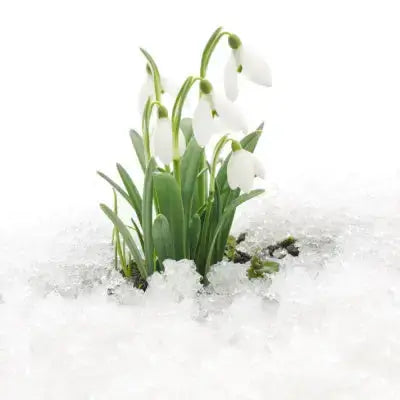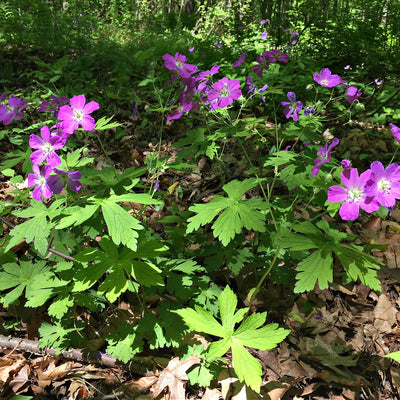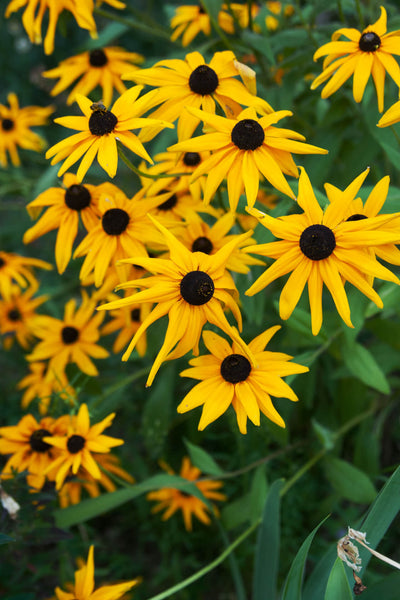TN Nursery Offers Advice For Which Type Plants Do Best in Colder Climates
When you think of a garden, you might envision a sprawling space filled with fragrant flowers and colorful plants. However, you may need to adjust to a colder environment to create the perfect garden for your area.
In colder climates, selecting plants that can handle cold weather is crucial. Failure to buy plants from the correct zone will result in plant failure when temperatures drop below freezing.
Fortunately, some hardy plants can thrive in cold climates. These include:
Wild Geranium Is a Perennial That is cold Hardy
It is easy to see why wild geranium is a popular garden perennial flower. Its bright colors and beautiful blooms make it a welcome sight in any garden. The wild geranium also makes an attractive addition to your home or office as a potted plant. While it can be grown from seed form, purchasing a plant from a nursery or garden center is much easier.
This is native to Europe and Asia and grows best in U.S. Department of Agriculture plant hardiness zones 3 through 9. It will survive in colder climates if planted in a protected area with mulch or other protective measures to protect it from frost.
Wild geranium plants are low-growing shrubs that stand about 2 feet tall and spread up to 3 feet wide when mature. They have leaves that grow up to 8 inches long and 4 inches wide, depending on your chosen species.
The flowers may be red, pink, or white and are tubular with five petals at their base, forming a star shape when fully open. They have many stamens at their center, which give them their bright colors and make them as attractive as outdoor plants.
Coneflower
Coneflower is a popular perennial that grows to about 4 feet tall. Its cone-shaped flowers range in color from yellow, orange, pink, and red.
Coneflower blooms from early summer through fall. It also attracts butterflies and hummingbirds.
Coneflowers are herbaceous perennials that grow in clumps of slender stems with whorled leaves at the bottom of each stem. Its leaves can grow up to 4 inches long with three lobes at the base of each leaf petiole. The flower heads are on long peduncles that arise from the upper leaf axils or stem joints and have 5-8 rays (petals). Each ray has a large yellow disk at its base, which gives rise to 3 stamens at its tip in addition to 5 smaller greenish-yellow scales, called ligules or keel scales.
The seeds of Coneflower are produced in small pods called cypselas that are covered with fine hairs for wind dispersal; however, most seeds germinate after being eaten by birds.
Lily pads
Lily pads are perennial floating aquatic plants, often found in ponds and lakes. The leaves of lily pads are shaped like a lotus leaf, but they are not related to true lotus plants. They grow from a single bulbous rootstock at the bottom of the water body. The plant is anchored by roots extending into the pond, lake bottom mud, or silt.
The upper leaf surface is covered with tiny hairs that give it a velvety texture. The lower surface is smooth and slightly thicker than the upper surface. The underside of each leaf has two air chambers that help keep it afloat.
Lily pads have long stems (petioles) that attach them to the water surface and stem-like flower stalks (spadixes) that rise above the water surface and bloom into large clusters of small white flowers with six petals each.
Each flower has a yellow center called an ovary that produces seeds for reproduction. These seeds fall back into the water and are eaten by fish, who then distribute them throughout their bodies until they die and decompose — this process helps spread new lily pad seedlings across your pond or lake.
This is a shrub native to North America and Asia. It is best known for its medicinal properties, but it also makes an excellent addition to any garden. Witch hazel is a deciduous plant that grows up to 20 feet with an equal spread.
The leaves are coated in white hairs that make the plant look like it has been dusted with powder. Its blooms are bright yellow and appear in clusters of up to 20 at the end of spring.
Witch hazel is usually grown as an ornamental plant because of its appearance, but it can also be used as a windbreak tree if the location is appropriate. This plant prefers moist soil and partial shade but can adapt to most climates.
Witch hazel has many uses outside the beauty industry, including personal health and insect repellent. The plant also has environmental benefits because it grows quickly and can be used in landscaping projects.
Shasta Daisy
Shasta daisies are popular for gardeners because they bloom all summer and can tolerate heat, drought, and poor soil. They grow well in containers, too.
Shasta daisies (Leucanthemum x superbum) are hardy perennials that grow from 3 to 5 feet tall and have large, white flowers with yellow centers. Although this plant is considered a perennial in USDA plant hardiness zones 3 through 9, it may need to be dug up annually in colder climates.
Shasta daisies can grow in full sun but will also tolerate partial shade. These plants prefer moist, well-drained soil but can tolerate dry conditions. Shasta daisies do not mind being planted near other plants or shrubs since they do not spread out like some types of wildflowers do.
The plants presented will be well suited for a variety of climates. They offer a range of unique features and can survive in harsh conditions. The options above will help you know how to grow plants in colder climates.
Making a Garden Bed for Colder Climates
Developing a garden bed for cold environments demands extensive planning and preparation to protect your plants so they flourish despite brutal temperatures. Freezing weather conditions may reduce the length of the growing season, but several approaches can help you harness the benefits of the environment. Setting up a garden bed in a cold region requires careful planning across multiple areas, such as site selection and bed design, making the entire process manageable considering each factor. This guide presents a comprehensive method to build a productive and resilient garden bed without mentioning specific plant species.
Start by identifying the best location for your garden bed. In colder climates, maximizing sunlight is crucial. Please select an area with at least six hours of direct sunlight daily and try to position it to receive morning and midday sun exposure. Warming soil through morning sun exposure helps maintain ground temperatures during nights with significant temperature drops. Positioning your garden bed to face southward ensures maximum sunlight exposure in the Northern Hemisphere during the day. Additionally, think about wind patterns: Garden beds need protection from strong cold winds because they can freeze plants and dry out the soil quickly, making sheltered locations or windbreaks like fences and hedges essential.
Your garden bed design should maximize heat retention after selecting its location. Raised beds usually work well in cold regions because they enhance soil drainage and warming. When you raise soil levels, it warms faster under sunlight, and this helps to lengthen your growing period. Select robust materials for raised bed construction that endure heavy snow loads and freeze-thaw cycles, including rot-resistant wood, bricks, stones, and additional durable selections. Constructing the bed with insulation in mind can also help: Gardeners create consistent soil temperatures by lining raised bed walls with insulating materials.
Next, focus on preparing the soil. Soil in cold environments typically faces challenges with compaction, scarce organic content, and sluggish biological processes. Resolve these soil problems by adding high-quality compost or well-rotted manure to enrich it. The extra organic matter in your soil provides essential nutrients for future plants and enhances soil structure while improving drainage and water retention properties. A well-composted medium functions as a thermal insulator while creating a stable environment that supports beneficial microorganisms essential for plant growth. Ensure that organic matter becomes fully integrated with the uppermost soil layer. During raised bed creation, you can construct a robust, nutrient-rich foundation using multiple layers of organic matter, known as “lasagna gardening.”
Timing is another critical component. Since the ground stays frozen or muddy until spring in cold regions, you should prepare your garden bed and incorporate organic matter before planting. This method stabilizes soil and absorbs necessary nutrients before adding plants or seeds. To warm your soil earlier in the growing season, try covering the bed with clear plastic or heat-trapping materials. Pre-warming techniques allow gardeners to begin planting weeks ahead instead of waiting for warmer weather conditions to occur naturally.
Effective moisture management is crucial in colder climates because excess water in the soil leads to root rot and additional plant challenges. Improve garden bed drainage by adding porous materials such as coarse sand or fine gravel to areas with dense clay soil. While raised beds enhance drainage by design, they still require water flow monitoring after heavy rains or snowmelt. To improve water flow when you see pooling on the surface, loosen the soil or add more organic matter.
Cold-weather gardening benefits from mulching, which maintains appropriate soil temperature and moisture levels. Using organic mulch materials like straw or wood chips around plants provides insulation for root systems while minimizing temperature fluctuations. Mulch maintains soil moisture, which reduces the need to water plants often. Applying a dense mulch layer before winter arrives, followed by partial removal in spring, allows the soil to absorb sunlight and warm up. In the latter part of the growing season, mulch must be applied again to protect roots from drying winds and drops in nighttime temperature.
Season extension strategies and implements are significant factors in gardening success. The use of low tunnels, row covers, or cloches shields tender plants from sudden frost events by capturing heat and developing a more suitable microenvironment. When constructing a permanent raised bed, you should install hoops or frames to enable you to attach protective covers quickly during temperature drops. The ability to respond rapidly to weather changes prepares you for the unpredictable weather patterns typical of cold regions.
Monitor the soil condition regularly to ensure its health throughout the growing season. Soil nutrients become depleted or eroded even in regions with cold weather conditions. Maintaining fertile planting soil requires regularly incorporating compost and organic amendments to keep your garden bed productive. Periodic soil testing enables you to identify specific nutrients that require replenishment in your garden soil. Maintaining your garden bed in a cold climate will strengthen it to sustain healthy plant growth for years.
Implementing these guidelines, including location choice, bed insulation, and soil enrichment, will help you develop a well-functioning garden bed that survives cold weather conditions. Through diligent preparation and regular upkeep, your garden will flourish and reward you in abundance, even in frosty weather.





